Enclosing a porch for winter can be a practical and cost-effective way to add extra comfort to your home during the colder months. By creating an additional barrier against the elements, you can help retain heat, reduce energy costs, and make the space usable even in frigid weather.
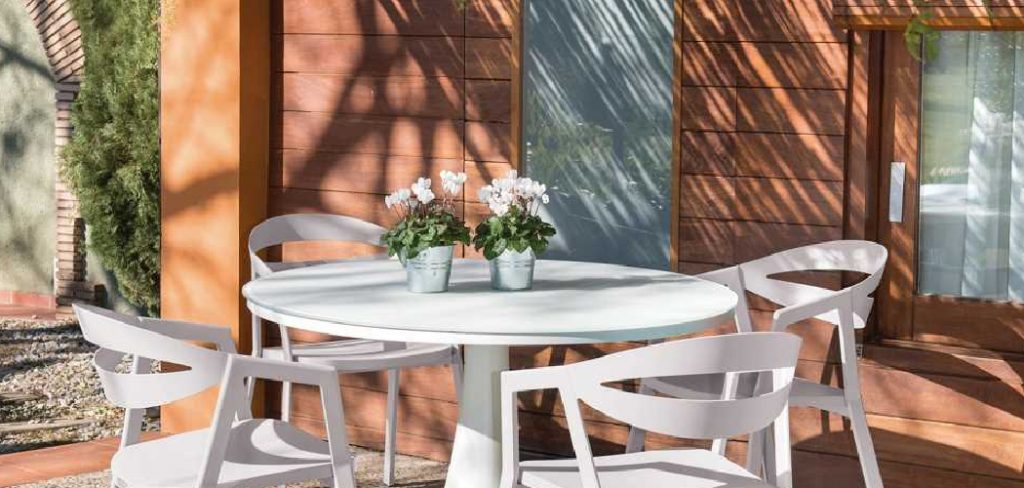
Fortunately, there are several budget-friendly options available that allow you to enclose your porch without breaking the bank. This guide will explore some easy and affordable methods for how to enclose a porch cheaply for winter.
Benefits of Enclosing a Porch for Winter
Enclosing a porch for winter offers numerous advantages that go beyond simply protecting it from the cold. One major benefit is improved energy efficiency. By adding an extra layer of insulation, you can prevent drafts from entering your home, reducing heating costs and keeping your indoor spaces more comfortable.
Additionally, an enclosed porch provides extra living space that can be used year-round. Whether it’s a cozy reading nook or a spot to entertain guests, the added room is both practical and versatile. Enclosure also protects your porch furniture and décor from snow, ice, and harsh winds, extending their lifespan and saving money in the long run. Lastly, it’s a great way to enhance your property’s value and appeal, making your home more functional and welcoming.
Assessing Your Porch and Budget
Before starting the process of enclosing your porch, it’s important to carefully assess both the structure and your budget. Begin by evaluating the current condition of your porch. Check for any damage, such as rotting wood, loose boards, or gaps that might need repair before you proceed.
This ensures a solid foundation for the enclosure and prevents future issues caused by moisture or structural defects. Next, measure the dimensions of your porch to determine the amount of material you’ll need. Accurate measurements will help you avoid overspending or running short on supplies.
On the financial side, setting a clear budget is key to keeping costs under control. Decide how much you’re willing to spend and research affordable materials that suit your needs. Options like clear vinyl panels, weatherproof plastic sheeting, or inexpensive storm windows can all help enclose your porch without significant expense.
10 Methods How to Enclose a Porch Cheaply for Winter
1. Install Plastic Sheeting or Shrink Wrap
Plastic sheeting, often used for greenhouse covers or winterizing windows, is one of the most cost-effective ways to enclose a porch. This method involves securing large sheets of plastic to the frame of your porch with staples or adhesive strips.
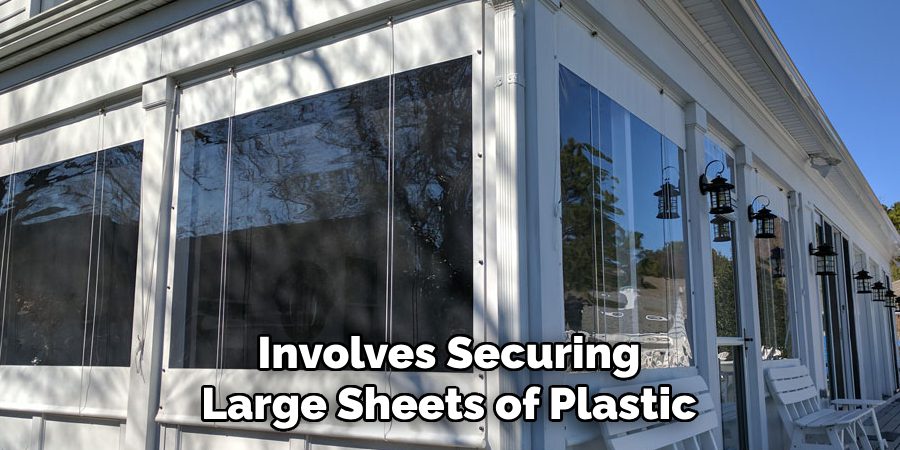
There are special shrink wrap kits available, which allow you to apply heat to the plastic, shrinking it tight for a more polished look. This not only provides a barrier against wind and cold but also lets in natural light. While not as sturdy as permanent structures, it offers a temporary and cheap solution for winter.
2. Use Curtains or Heavy Drapes
Another affordable option is to hang thick curtains or drapes around the perimeter of your porch. Choose outdoor-rated fabric that is thick enough to block wind and insulate the space. By using curtain rods or tension rods, you can easily hang these fabrics without the need for any structural changes.
This method provides flexibility since you can open or close the curtains depending on the weather and desired level of insulation. It’s an ideal option for porches with existing posts or railings.
3. Install Sliding or Folding Plastic Panels
Sliding or folding plastic panels are another low-cost way to create a winter enclosure. These panels are lightweight, inexpensive, and easy to install. They slide or fold along tracks that can be fixed to the top and bottom of the porch frame.
These panels can be moved aside when not needed and easily put in place when the weather turns cold. This method works well for a porch that might need to be opened up in milder months or if you want the ability to let air in occasionally.
4. Use Plywood for a Solid Barrier
Plywood is a cheap and versatile material that can be used to block off the open sides of your porch. By cutting the plywood to fit the dimensions of the porch, you can easily secure it to the structure with screws or nails.
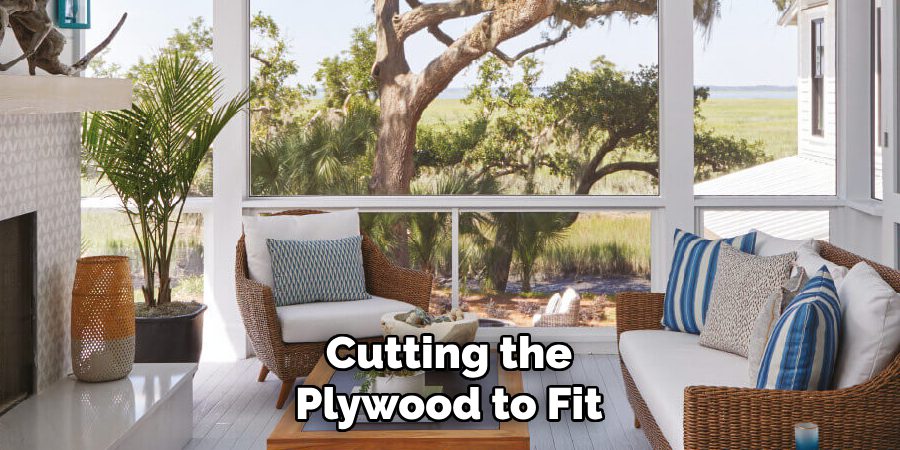
Plywood offers excellent insulation and protection from the wind and snow. You can even paint or stain it to match the aesthetics of your house, giving your porch a more polished look. This is a more permanent solution than plastic but still quite affordable, especially if you find deals on surplus or used plywood.
5. Repurpose Old Windows or Doors
If you have access to old windows or doors, consider repurposing them to create a more robust enclosure. Many homeowners have used second-hand or salvaged windows to enclose a porch affordably.
The windows can be attached to the porch frame using screws, hinges, or brackets, allowing you to open or close them as needed. Not only does this method recycle materials and reduce costs, but it also provides a sturdy and visually appealing solution that can last for years.
6. Screened Porch Enclosure with Clear Vinyl
For those who prefer a more open feel while still protecting the porch from the elements, installing a screened porch enclosure with clear vinyl panels is a great option. You can purchase pre-made vinyl panels or create your own by attaching clear plastic sheeting to a frame of screening.
This option allows you to maintain visibility and airflow while keeping cold air out. The combination of screening and vinyl provides a lightweight, budget-friendly option for enclosing your porch without fully blocking out natural light.
7. Use Pallets for a Rustic Enclosure
If you’re looking for a truly budget-conscious option, pallets are an excellent material to consider. Pallets can often be obtained for free or at a very low cost. Simply stack and secure them to create walls around the porch.
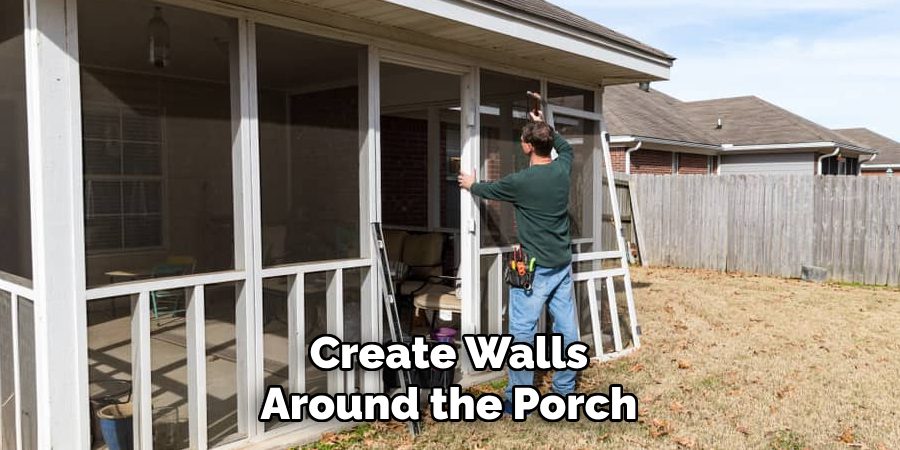
You can reinforce them with nails or screws to keep them stable. To ensure better insulation, you can add a layer of plastic sheeting or fabric over the pallets. This method is ideal if you’re going for a rustic, industrial look and don’t mind putting in a little elbow grease to make it work.
8. Install Vinyl Siding Panels
Vinyl siding panels are another affordable option for enclosing a porch. Though typically used on the exterior of homes, these panels can also serve as a durable, weather-resistant solution for enclosing a porch. Vinyl is inexpensive, low maintenance, and provides insulation from the elements.
The panels can be nailed directly onto the porch frame, creating a more permanent enclosure that can handle the winter weather. Additionally, vinyl siding is available in a variety of colors and styles, so it can be customized to suit your aesthetic preferences.
9. Build a Simple Wooden Frame with Clear Plastic or Plexiglass
For a more sturdy yet budget-friendly enclosure, you can build a simple wooden frame and fill it with clear plastic or plexiglass sheets. This DIY method involves constructing a frame from inexpensive wood, such as 2x4s, and then attaching clear plastic or plexiglass sheets to create a solid barrier.
Plexiglass, though more expensive than plastic sheeting, offers better insulation and durability. This method will help create a weatherproof enclosure while maintaining the natural light and open feeling of your porch.
10. Insulate with Bubble Wrap or Reflective Foil
A surprisingly effective method for enclosing a porch cheaply is to use bubble wrap or reflective foil insulation. These materials can be attached to the inside of your porch walls, either over a frame or directly to the existing structure.
Reflective foil insulation helps retain heat by reflecting it back into the space, while bubble wrap provides an additional layer of air that acts as an insulator. This method works particularly well when combined with other enclosure options, such as plastic sheeting or drapes, offering enhanced warmth without spending a lot.
Maintenance and Upkeep
Maintaining your enclosed porch is essential to ensure it remains functional and durable throughout the colder months. Regularly inspect the materials used for the enclosure, such as plastic sheeting, vinyl, or plywood, for signs of wear and tear, such as cracks, holes, or loosened fittings.
Replace or repair any damaged components promptly to maintain insulation and weather protection. Clear away dirt, snow, and debris that may accumulate around the enclosure and its supports to prevent structural damage or moisture buildup.
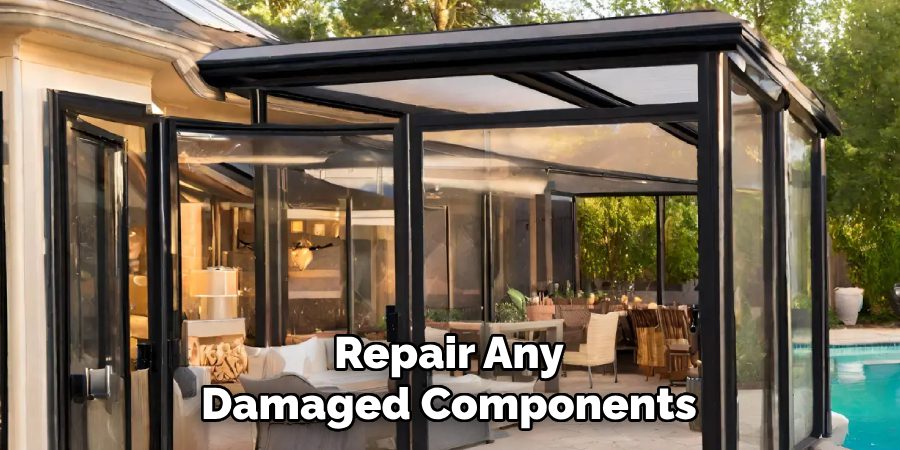
For fabric or vinyl coverings, clean them using mild soap and water to prevent mold or mildew growth. If you’ve installed wooden frames or pallets, ensure they’re sealed properly with varnish or weather-resistant coatings to avoid rotting. Hinges, tracks, or movable parts on sliding panels or repurposed windows should be lubricated periodically to ensure smooth operation.
Conclusion
Enclosing a porch for winter on a budget doesn’t have to be complicated or expensive. By using a combination of cheap materials like plastic sheeting, pallets, repurposed windows, and reflective foil, you can create a cozy, insulated space to enjoy during the colder months. Thanks for reading, and we hope this has given you some inspiration on how to enclose a porch cheaply for winter!

Professional Focus
Oliver Wood, a passionate patio designer, specializes in creating comfortable and inviting outdoor spaces that enhance relaxation and entertainment. His work combines a deep understanding of design with a love for nature, making him a standout professional in the field of outdoor living spaces. Through his thoughtful approach, he transforms everyday patios into extraordinary retreats for family and friends.
About the Author
Oliver Wood, a skilled patio designer, shares his expertise on outdoor living through his designs and insights. With a background in patio design and a genuine passion for creating beautiful spaces, he encourages others to invest in their outdoor environments, enhancing their homes with functional and inviting spaces for relaxation and entertainment.
Education History
University: Virginia Union University
Oliver’s education equipped him with the knowledge and skills to design patios that merge aesthetics with comfort, transforming outdoor areas into beautiful extensions of the home.
Expertise:
- Patio Design and Outdoor Living Spaces
- Functional and Aesthetic Landscaping
- Comfortable and Inviting Outdoor Environments
- Design Philosophy for Family-Oriented Spaces
- Creating Spaces for Relaxation and Entertainment
